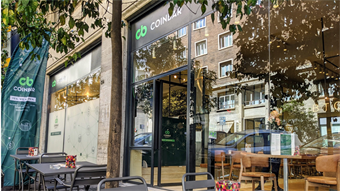The customer at the core of outlet centres
- In Strategy
- 23:19, 13 November 2018
- 2128 Views

Experience-led shopping trips are transforming the ways operators entice customers to outlet centres, with the latest digital tools enabling Neinver to understand shoppers needs even better.
Gone are the days when outlet centres were just a way for brands to unload surplus stock with little regard for the shopping experience. The outlet business has become an important channel for many brands. Retailers know outlet centres have been posting good results in a broadly struggling retail environment.
Today, the challenge for outlet centres is to maintain shoppers’ excitement. It is no longer about offering brands and products at a discount in one comfortable, attractive place. Recent studies predict that by 2020, customer experience will outstrip pricing and products as the main feature that sets a brand apart from its competitors, and retailers need to be prepared.
This is largely due to the new consumer, as a growing millennial and Gen Z population cares more about experiences than about products, and wants to be heard, served and rewarded. These three elements require an appropriate, effective response from retailers.
Emotional element
Within this context, the emotional element has become a key ingredient to motivate consumers and build their sense of connection to the brands. Increasingly, the main strategy to make a shopping centre stand out involves focusing on each visitor’s experience. Outlet centres have also been evolving towards a consumer-first strategy, changing their value proposition so they can extend the growth they experienced in recent years.
‘In this fast-changing environment, studying consumers’ behaviour and listening to them will be ever more important if we are to create truly memorable customer-centred experiences, and amongst others aspects, technology lets us do that,’ says Sebastian Sommer, marketing and retail director of Neinver, one of the leading operators in the European outlet sector.
‘If we are to create truly memorable customer-centred experiences, technology lets us do that.’
Sebastian Sommer, Neinver
To meet these challenges, Neinver has developed a digital platform that has become one of the core elements of its customer experience strategy. This tool can collect information about customers based on their visit (their behaviour while exploring the centre or making a purchase) and through digital channels, making it possible to leverage analytics and thus act more efficiently.
The system centralises all the information from mobile apps, social media and the company’s own activities in its centres (through geolocation technology using Wi-Fi and Bluetooth). The combination of some of these tools permits the sharing of better-oriented communications and the personalising of offers. In fact, receiving customised offers is one of the most valued aspects by shoppers, and estimations show that relevant and useful segmented communications, increases consumer loyalty and it can boost sales by 10% to 30%.
Besides optimising its marketing activities, focusing on a customer experience strategy helps the company tailor its centres’ leasing and management strategies to shoppers and lets it design a memorable experience for them in every way: including the best commercial offer, the right dining options, and creating events valued by visitors.
Behavioural patterns
Aside from bolstering the shopping experience, this digital management tool also makes it possible to offer brands newly available information about the behavioural patterns of the centre’s visitors, letting brands optimise their own strategies for attracting customers and promoting onsite purchases.
This is highly valuable because, as Sommer sees it, ‘for an outlet centre, the idea of strategic partnership with the brands is stronger than in other retail sectors, and involves variable rents, more intensive management, and a strong emphasis on marketing. To strengthen our win-win relationship, we therefore support brands’ strategies by offering them innovative indicators about their customers that they could not otherwise obtain.’
This strategy, built around customer experience, lets the company move its management model towards true knowledge of consumers to create exciting, customised, consistent experiences across all channels. ‘Digital transformation is not about technology; it's about customer relationships. There’s not just one correct path, but if we can listen to and understand consumers, we will be able to make smart decisions and invest in elements that really matter to them,’ says Sommer.






